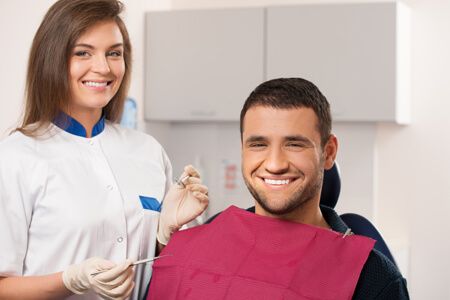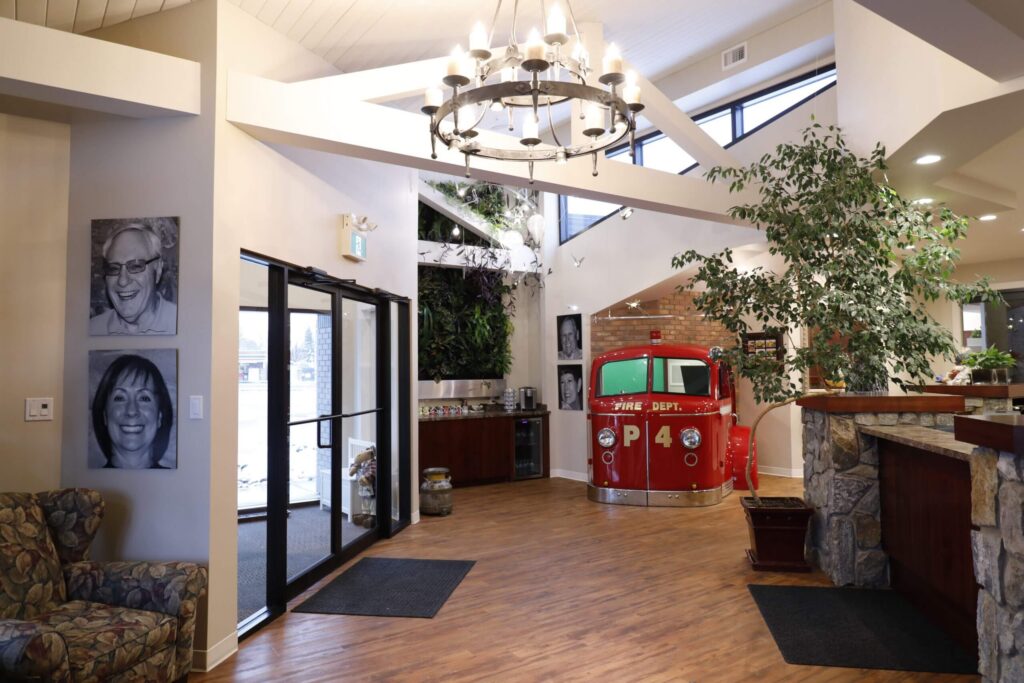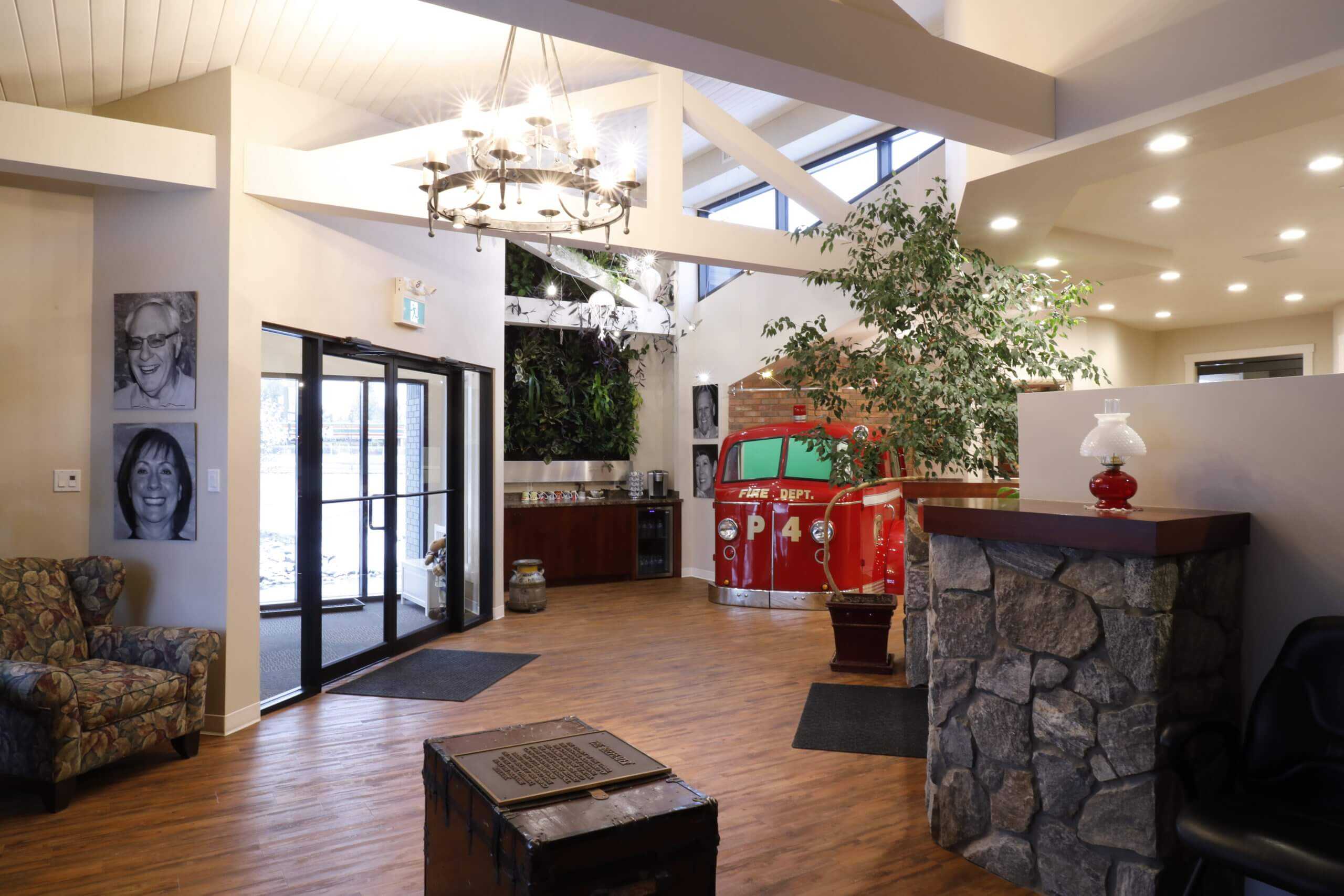What is Guided Biofilm Therapy (GBT)?
Guided Biofilm Therapy (GBT) uses advanced tools to get rid of biofilm or bacterial deposits on the surfaces of the teeth. It discloses the location of the plaque, making it easier and faster to remove.
The traditional methods involved manual (hand) and ultrasonic (electronic) instruments. GBT, on the other hand, uses AIRFLOW® technology that delivers deeper cleaning without directly touching the teeth and gums.
GBT is gentle yet effective, and we’re happy to offer it to our patients here at Cool Dental in Lethbridge, Alberta. See the difference and book your appointment today!
What can I expect from the GBT procedure?

1. Evaluating your teeth and gums
The process begins with a dental examination and oral cancer assessment. Your dentist will also inspect the state of your dental work or appliance. To qualify for GBT, the soft tissue in your mouth must be healthy.
Afterward, you rinse with a preprocedural mouthwash. This reduces the bacterial load in your mouth and minimizes aerosol contamination.
You also wear a retracting device to separate your lips and cheeks from your teeth. This allows your dental team to see and access your mouth more easily.
2. Disclosing the location of the biofilm
Next, your dentist or hygienist applies the EMS Biofilm Discloser.
It dyes areas where the plaque is, serving as a guide during the cleaning process. Plaque can be colorless and difficult to spot with the naked eye.
Revealing the location of biofilm using accurate markers prevents missing spots that need cleaning. Getting rid of the plaque also removes the dye.
3. Understanding the condition of your mouth
Applying the dye reveals areas of your mouth that can be tough to clean.
Your dental team shows you photos of your mouth to raise awareness of why the procedure is important. You can see how your mouth improves after the cleaning process.
Understanding the steps involved and witnessing their positive effects firsthand can motivate you to cooperate throughout.
4. Applying AirFlow® Max
AirFlow® is a handpiece used for dental cleaning and polishing. It removes deposits up to 4 mm below the gum line.
It applies even to those with braces, implants, and dental restorations. It can also be used to clean the tongue.
AirFlow® can reach deep grooves and clean orthodontic brackets, misaligned teeth, and margins below the crown. It’s minimally invasive too, which helps preserve dental work, soft tissue, and the natural tooth structure.
AirFlow® Classic Comfort Powder, on the other hand, is used to target remaining deposits, such as stains from coffee and tobacco.
5. Reaching deep pockets with PerioFlow®
Calculus can be removed from gum pockets as deep as 9 mm using the PerioFlow®. Like the AirFlow®, it’s also a handheld device used for periodontal therapy.
It has a specialized tip that reaches deep pockets, but its gentle nature prevents sensitivity. It’s powerful, but since it’s minimally invasive, the dentin and the cementum remain protected.
The dentin is the layer beneath the enamel, which is softer. And the cementum is the layer that covers the roots of the tooth.
6. Getting rid of remaining calculus
The next step is cleaning pockets deeper than 10 mm and removing calculus up to 3 mm below the implants.
Piezon® technology is used for this step. It comes with ultrasonic tips and dynamic response features that remove tartar safely and accurately.
Piezon® is a gentle tool that allows for a comfortable dental cleaning experience. It can remove up to 95% of biofilm above and below the gum line, eliminating the need for various instruments.
7. Final evaluation
Deposits can mask decay and make it hard to notice, but Guided Biofilm Therapy (GBT) makes these areas visible.
Your dentist targets them during the quality control phase. They remove the calculus and apply fluoride to your teeth. The earlier steps clean and polish the teeth at once.
Finally, your dental team will photograph your smile so you can compare how it looked before and after the procedure.
8. Discussing follow-ups
Your dentist discusses follow-up visits with you according to your risk assessment. They also talk to you about concerns you may have.
Keeping up with your dental hygiene cleaning appointments can help you avoid unnecessary visits. Healthy teeth and gums need less work, which cuts down chair time.
Dental visits are scheduled every 6 months or twice a year. Those with an increased risk for tartar buildup or tooth decay may need to come in more frequently. The same goes for those with orthodontic appliances and dental conditions, such as gum disease.
Benefits of Guided Biofilm Therapy (GBT)

- Gentle. GBT is gentle, making it suitable for children as well. It reduces the need for dental cleaning instruments that some may be uncomfortable with. Tools don’t come in contact with the teeth and gums. The reduced sensation and faster treatment times help anxious patients feel more at ease.
- Effective. The GBT guarantees effective plaque removal. The technology lives up to its purpose: gum disease management and comfortable dental hygiene cleanings. Biofilm becomes easily visible and accessible, and chair time is significantly reduced.
- Safe. The GBT is backed by decades of research. It’s proven safe for natural teeth and any dental work, including implants. It’s tough on plaque, even the kind lurking in deep gum pockets, but it’s gentle on the mouth.
Patients are aware of the importance of routine hygiene cleanings, but anxiety and fear sometimes keep them from showing up. The Guided Biofilm Therapy reduces potential triggers for anxiety and provides opportunities to keep your oral health in check. We’re happy to offer this service to the Lethbridge community in Alberta.
To hear more about how GBT works, get in touch with us at Cool Dental. We’re excited to show you how this dental technology is preserving oral health and making smiles a lot better.



